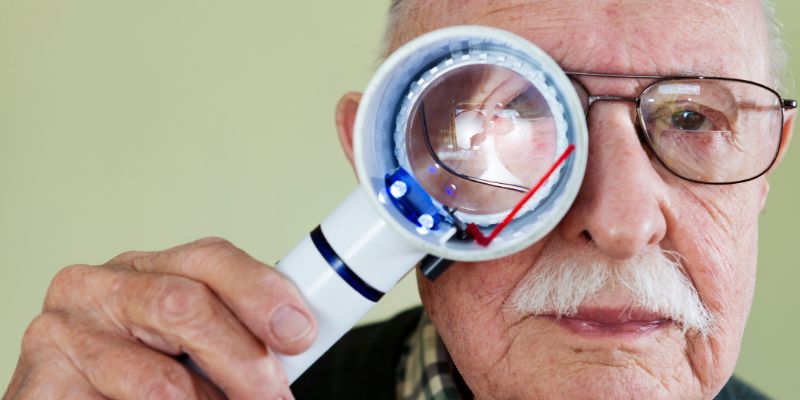The Unseen Challenges of ADHD-PI: Focus and Life Balance
Attention Deficit Hyperactivity Disorder, primarily inattentive presentation (ADHD-PI), often flies under the radar compared to its more commonly known counterpart, ADHD with hyperactivity. While hyperactivity draws attention due to its disruptive nature, ADHD-PI manifests in subtler ways, making it harder to recognize.
This article delves into ADHD-PI, exploring its symptoms, diagnosis, treatment, and how it affects the daily lives of those who experience it. Understanding this condition is essential for parents, educators, and individuals themselves, as awareness can lead to better support and management strategies.
ADHD-PI: Symptoms and Characteristics
ADHD-PI is a subtype of Attention Deficit Hyperactivity Disorder that focuses primarily on inattention. Individuals with this presentation may struggle with maintaining focus, organizing tasks, following instructions, and completing work. Unlike ADHD with hyperactivity, those with ADHD-PI may not exhibit the outward signs of restlessness or impulsivity; instead, they often seem daydreamy, forgetful, or disengaged. This can lead to misconceptions that these individuals are simply lazy or unmotivated when, in reality, their challenges stem from neurological differences.
Identifying the symptoms of ADHD-PI can be tricky, particularly because they can overlap with common childhood behaviors. Some of the most prevalent symptoms include:
Difficulty Sustaining Attention: Individuals may struggle to stay focused on tasks or activities, often zoning out during conversations or lectures.
Forgetfulness: Routine tasks such as tracking personal items, remembering deadlines, or following through on commitments can be overwhelming.
Disorganization: A lack of structure can lead to chaotic environments, making it hard for individuals to manage their time and responsibilities effectively.

Avoidance of Tasks Requiring Extended Mental Effort: Activities that demand prolonged focus may be avoided altogether, leading to procrastination.
Easily Distracted: Individuals may find it challenging to filter out extraneous stimuli, leading to frequent distractions from tasks at hand.
Daydreaming: A tendency to drift off into thoughts, losing track of time or the current activity.
Difficulty Following Through: Starting tasks but not finishing them is common, leading to a sense of frustration and low self-esteem.
Recognizing these symptoms is the first step in understanding and addressing ADHD-PI. However, it's important to note that not every individual will display all these symptoms, and the severity can vary significantly.
The Impact of ADHD-PI on Daily Life
ADHD-PI can affect various aspects of life, including academic performance, work productivity, and personal relationships. In academic settings, students with ADHD-PI may struggle to keep up with lectures or assignments, resulting in lower grades despite having the potential to excel. They may appear disengaged or uninterested, leading teachers to misinterpret their behavior as a lack of motivation.
In the workplace, adults with ADHD-PI may find it challenging to complete tasks, meet deadlines, or manage their time effectively. This can lead to increased stress and anxiety, as they may feel overwhelmed by their workload. In personal relationships, the forgetfulness and disorganization associated with ADHD-PI can lead to misunderstandings and frustration between friends, family, and partners.
Furthermore, the emotional toll of living with ADHD-PI should not be underestimated. Many individuals may experience feelings of inadequacy, low self-esteem, and anxiety due to their perceived shortcomings. This can create a vicious cycle, where the emotional struggles further exacerbate the symptoms of inattention.
Diagnosis of ADHD-PI
Diagnosing ADHD-PI can be complex, often requiring a multi-faceted approach. Unlike other medical conditions, there is no definitive test for ADHD. Instead, healthcare professionals typically conduct a comprehensive evaluation that includes:
Clinical Interviews: Detailed discussions with the individual and, when applicable, family members to gather information about the individual's behavior and history.
Behavioral Assessments: Standardized questionnaires or rating scales that help assess the frequency and severity of symptoms.
Observation: Observing the individual in different settings, such as at home and school or work, to gain insight into their behavior and attention levels.
Rule Out Other Conditions: It's crucial to differentiate ADHD-PI from other conditions that may present similar symptoms, such as anxiety disorders or learning disabilities.
A proper diagnosis is essential, as it opens the door to appropriate treatment options and support. Without an accurate diagnosis, individuals may struggle without the help they need, leading to a continuation of their challenges.
Treatment Options for ADHD-PI
Once diagnosed, there are various treatment options available for managing ADHD-PI. These can include:
Behavioral Therapy: This type of therapy focuses on changing negative behaviors and developing coping strategies. Cognitive-behavioral therapy (CBT) is particularly effective in helping individuals understand their thought patterns and how they influence behavior.

Medication: Stimulant medications like methylphenidate or amphetamines are often prescribed to help increase attention and focus. Non-stimulant medications, such as atomoxetine, can also be effective for individuals who do not respond well to stimulants.
Educational Support: Individualized Education Plans (IEPs) or 504 Plans can provide accommodations for students, such as extra time on tests, reduced homework, or the ability to use technology to aid in organization and focus.
Lifestyle Modifications: Adding structured routines, regular exercise, healthy nutrition, and sufficient sleep can significantly improve attention and overall well-being.
Support Groups: Connecting with others who understand the challenges of ADHD-PI can provide valuable emotional support and practical advice.
Each individual's treatment plan will differ based on their unique needs and circumstances. Working closely with healthcare professionals, educators, and family members can help create an effective approach to managing ADHD-PI.
Conclusion
ADHD-PI is a complex condition characterized primarily by inattention. It may not receive the same level of attention as other presentations of ADHD, but it poses significant challenges for those who experience it. By understanding its symptoms, impact, diagnosis, and treatment options, we can better support individuals with ADHD-PI in their journey.
Awareness and empathy are crucial in creating an environment where those with ADHD-PI can flourish. Whether it's through educational support, behavioral therapy, or simply understanding their experiences, there is hope for a fulfilling life despite the challenges posed by inattention.












